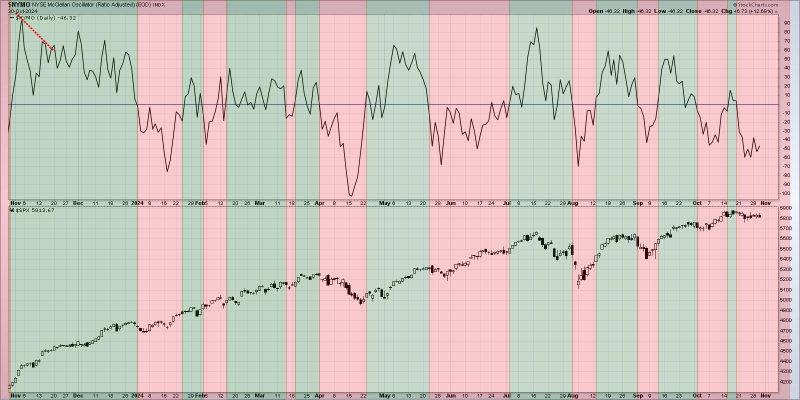In technical analysis, divergences are a powerful tool used to forecast potential trend reversals or continuations in the financial markets. One specific type of divergence that has been catching the attention of traders and analysts lately is breadth divergence. Breadth divergence occurs when the stock market index is making new highs, but a larger number of individual stocks are failing to follow suit. This discrepancy can signal potential weakness in the overall market trend.
Traditionally, market breadth indicators such as the Advance-Decline Line (AD Line) and the McClellan Oscillator have been used to measure the underlying strength or weakness of the market. When these breadth indicators diverge from the movement of the major indices like the S&P 500 or the Dow Jones Industrial Average, it can convey important information about the market’s internal dynamics.
Recently, there have been growing concerns among investors and analysts about the presence of breadth divergences in the current market environment. As major indices have continued to reach new all-time highs, some market participants have observed that a significant portion of individual stocks are not participating in the rally. This lack of broad-based participation could potentially foreshadow a weakening market trend or even a possible correction.
One of the key implications of breadth divergences is that they can highlight underlying structural weaknesses in the market rally. When only a small number of stocks are driving the overall index higher, it may suggest that the market rally is becoming increasingly narrow and less sustainable. In such cases, a market pullback or correction could be on the horizon as the lack of broad participation may eventually lead to a loss of momentum.
It is important to note that breadth divergences are not always a definitive signal of an impending market downturn. While they can serve as a warning sign, other factors such as economic indicators, interest rates, and geopolitical events should also be considered when evaluating the overall market outlook. Additionally, breadth divergences can sometimes be temporary and resolve themselves as the market dynamics evolve.
As investors navigate the complex landscape of the financial markets, staying attuned to indicators like breadth divergences can provide valuable insights into the underlying market conditions. By monitoring market breadth alongside other key indicators, market participants can better position themselves to navigate potential market shifts and identify trading opportunities in a timely manner.

